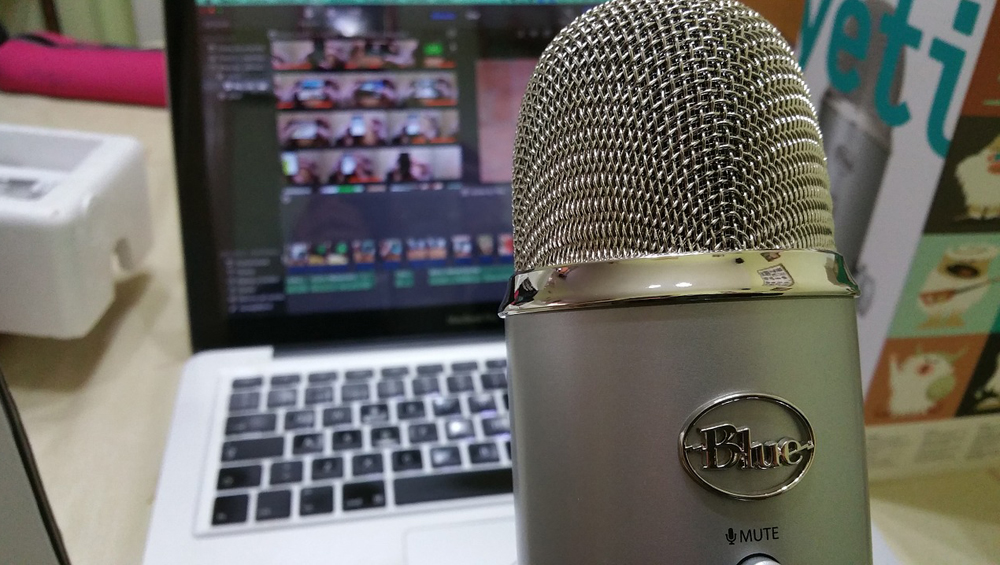
Audio Takes Center Stage


Joe Annotti
Like so many digital technologies, podcasts have been around longer than you might think. And, like other digital technologies, they had a different name. Podcasts were formerly called audioblogs (no wonder that moniker didn’t catch on) and date to the 1980s. It wasn’t until the year 2000 that the first system enabling the selection, automatic downloading, and storage of serial episodic audio content on PCs and portable devices was made available.
According to Wikipedia, early (and now defunct) MP3 manufacturer i2Go introduced a digital audio news and entertainment service called MyAudio2Go.com that let users download episodic news, sports, entertainment, weather, and music in audio format for listening on a PC, its audio player, or other MP3 players. A BBC journalist is credited (or blamed) for combining “iPod” and “broadcasting” to create “podcasting,” giving Apple perhaps undeserved acclaim for the term. Interestingly, Apple announced just last month it was discontinuing its iconic iPod player after more than 20 years.
Fast forward to 2022, and podcasts are exploding in popularity — and media companies large and small want to get in on the action — and revenue. In our most recent issue of TFM, the magazine for members of the Media Financial Management Association, Steve Goldstein, founder and CEO of audio advisory firm Amplifi Media, explains why local media companies are quickly discovering how they can benefit from investing in podcasting — and audio streaming as well — and the ways in which they should approach the two mediums.
While it initially inched along, podcasting began to pick up speed early in the 2010s, as did audio streaming services like Spotify and Pandora. Spotify launched in the U.S. in 2011; Pandora, which launched in 2005, already had 70 million subscribers by 2013 (though that number dropped to 55.9 million subscribers by 2021). Podcast offerings have exploded, with more than 2.4 million currently available, according to the Podcast Industry Insights tracker.
Americans have embraced podcasts. The Infinite Dial 2021, a report put out by Edison Research and Triton Digital (and credited as the longest-running survey of digital media consumer behavior in America), states 162 million U.S. residents older than 12 have listened to a podcast at least once. That’s up from 11 million in 2006. Further, 28% of the U.S. population now listens to a podcast on a weekly basis — a percentage that has increased each year since 2013. And 19% of those listeners tune into between 6 and 10 podcasts each week.
Likewise, streaming audio has grown exponentially: Infinite Dial 2021 reports that 67% of the U.S. population 12 and older listens to streaming audio weekly, which equates to 192 million weekly listeners. Spotify and YouTube alone represent 50% of that audio.
And where there are listeners, advertisers will follow. The IAB (Interactive Advertising Bureau) and PricewaterhouseCoopers report that podcast advertising will surpass $2 billion by 2023 — a massive increase over the $133 million it estimated advertisers spent in 2015 (and Goldstein reminds us that just seven years ago, most ads were read by the podcast hosts, not dropped in digitally, and featuring tracking and accountability measurement). Research firm eMarketer estimates ad revenues to approach $3 billion by 2025.
One of the most compelling reasons for advertisers to put their dollars into podcasts and audio streaming is its very attractive demographics. Podcast listeners are upscale and educated. Most importantly, the median age of listeners is 34, by far the lowest of any major media.
Contrast that number with findings from Cumulus Media and its Westwood One unit, which say AM and FM’s median age is 48, and TV’s is 54. It only makes sense that advertisers will shift their budgets in an attempt to reach younger consumers.
Multi-platform audio company Audacy has its own term for the new generation of listeners powering audio’s growth: it calls them “AudioX” because they listen to audio across channels, including radio and podcasts. The company says the emergence of these cross-platform listeners is this year’s biggest industry development.
According to The Wall Street Journal, podcasting is the fastest-growing segment for major national brands. The Standard Media Index for 2021 shows that national advertisers increased their digital ad spend by 43% compared to 2020; for the first time, some national advertisers spent as much on digital audio as they did on AM and FM radio (although radio ad spend is still the largest slice of the audio pie).
There’s huge money being exchanged in the ownership of podcasts themselves. Goldstein calls it a “real estate grab” happening over the past few years, with companies like Amazon, Spotify and SiriusXM investing in podcast startups, platforms, and digital ad technologies, and paying premium prices for coveted shows. Spotify purchased The Joe Rogan Experience, the No. 1 podcast in the U.S. which gets 11 million listeners per episode, for a reported $200 million in early 2020.
Where does all this excitement and activity leave local media companies? Goldstein checked in with Gordon Borrell, CEO of Borrell Associates, a research firm that tracks local media. Borrell says they’re seeing local media wanting a piece of the ad revenue action — and quickly joining the national podcasting craze with their own local audio brands. Chief among the participants, Borrell says, are publicly held radio, TV and newspaper companies, and independent influencers.
Our friends at MediaVillage recently published an interview with Audacy CMO Paul Suchman that echoes much of Goldstein’s premise, which is that an audio revolution is underway, and that audio creators, listeners, and advertisers all play a role in disrupting the broadcast industry — and that it’s all positive for the industry. Audacy’s most recent semi-annual “State of Audio” report is aptly named “The Disruptors: The Listeners, Creators and Advertisers Revolutionizing Audio.”
Audacy says brands need to stop thinking of themselves as interrupters and embrace the role of disruptor — with ads that offer a fresh approach to their messaging, which might take the form of a new style, length, type of ad, or multiple variations of a campaign. Brands have the opportunity to be change agents and deliver illuminating and additive messages.
Uniquely among media, audio claims these “secret weapons”: intimate connections between listeners and content, and engagement between listeners and ads. While that might seem simple, in today’s cluttered media environment, advertisers are looking for far more than just places to advertise; they want attentive consumers ready to take action. Audio delivers on that need.
Add to that the ability of podcasts and streaming audio to offer both the flexibility of on-demand and a demographic sweet spot, and audio becomes “a killer tool for advertisers,” as Suchman notes.
Despite the outdated name, podcasts are now a fixture in the media industry. They are as integral a component of distributing content to consumers — and as disruptive a force in attracting advertisers — as streaming. The major players in the podcasting sector may change through consolidation and the marketplace’s “survival of the fittest” reality. But those who continue to dismiss podcasting as a passing fad may end up being the buggy whip-makers of the 19th century.
Joe Annotti is president and CEO of the Media Financial Management Association and its BCCA subsidiary, the media industry’s credit association. He can be reached at [email protected] and via the association’s LinkedIn, Facebook, Instagram and Twitter accounts.


































Comments (0)